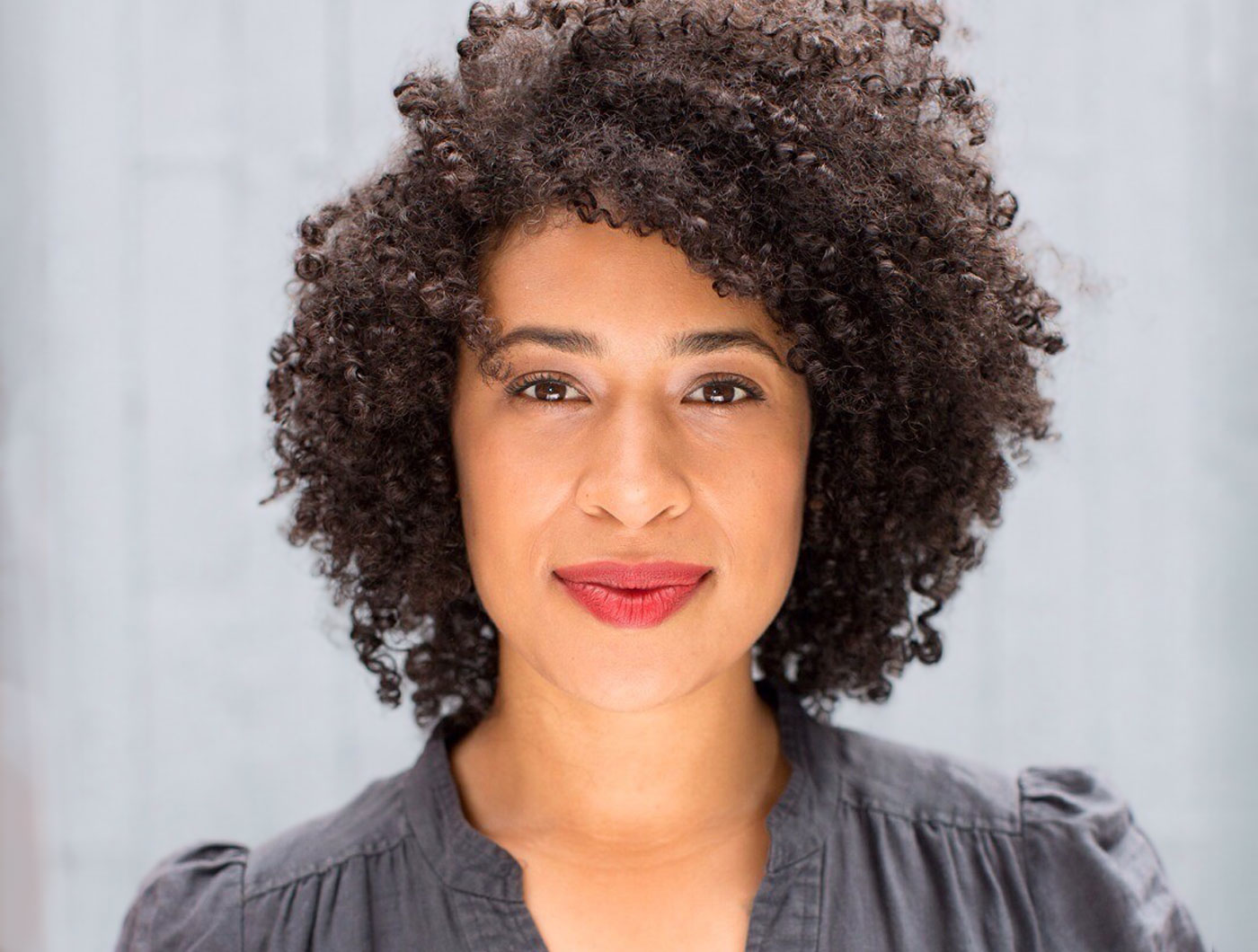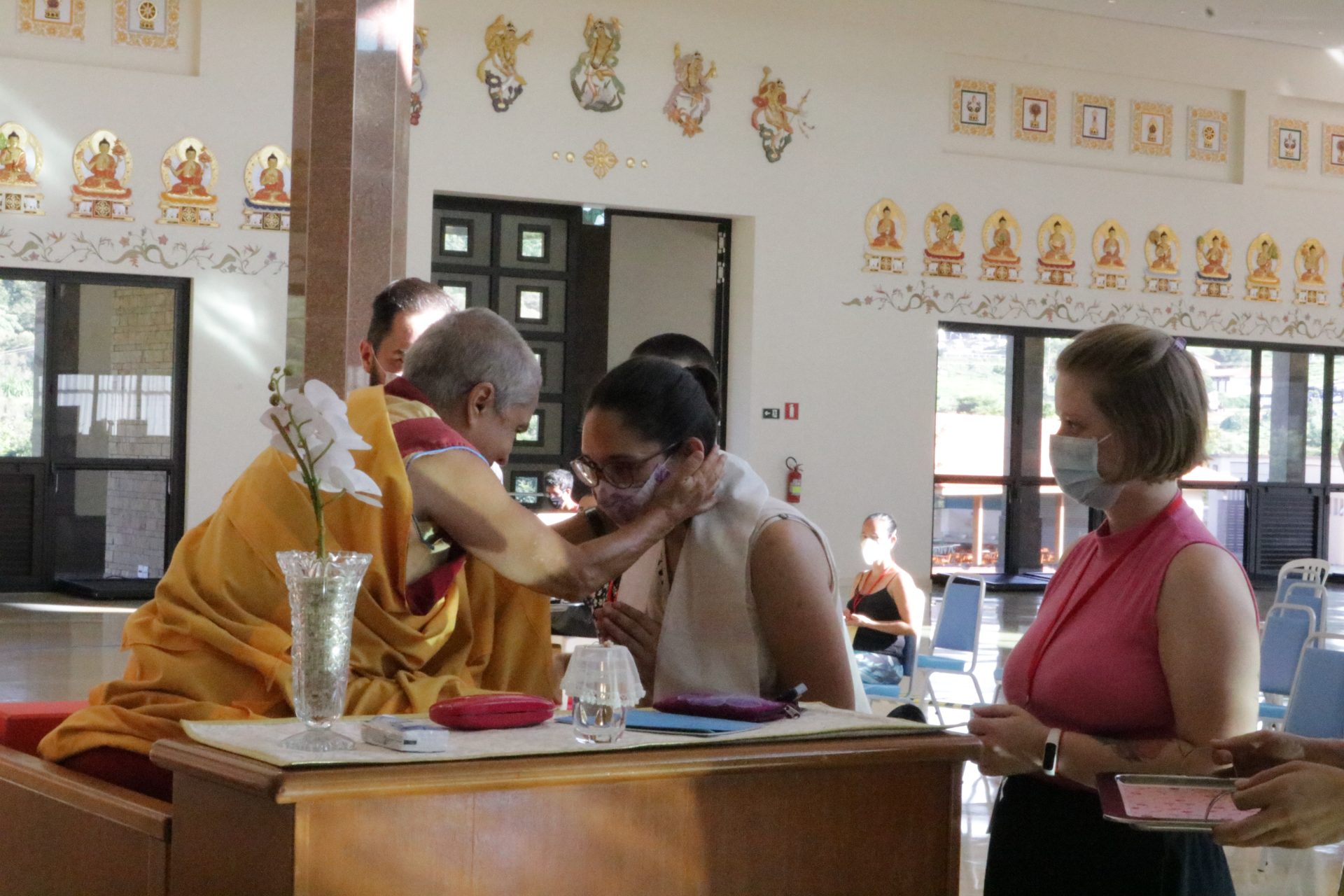Making Friends with Yourself
Every time you find yourself at home in your body again, let it be a moment of appreciation and celebration The post Making Friends with Yourself appeared first on Tricycle: The Buddhist Review.

Meditation Meditation Instructions
Every time you find yourself at home in your body again, let it be a moment of appreciation and celebration
By Kate Johnson Oct 16, 2022 Kate Johnson | Photo by Isabel Wilder
Kate Johnson | Photo by Isabel Wilder
Join Kate Johnson for Messy, Awkward, Beautiful: Making and Sustaining Radical Friendships Along the Spiritual Path, a virtual event on October 27. As part of Tricycle’s weeklong event series, Living Well in Difficult Times, we’ll be featuring a series of leading Buddhist teachers and thinkers—including Stephen Batchelor, David Nichtern, Sylvia Boorstein, and Kaira Jewel Lingo—in conversation on how to thrive under any circumstances. Sign up for free now.
When we make friends with ourselves—when we spend time doing the things that bring us well-being and pleasure and delight, when we tell ourselves that whoever and however we are is not only OK but also totally lovely—we become the kind of people others want to be around too. Our radical friendship is like a magnet. Changing ourselves doesn’t automatically change the world, but it’s an excellent place to start.
***
A Practice for Making Friends with Yourself
If you want to try this practice, start by finding a position for your body that is as comfortable as possible—it could be sitting in a chair or on a meditation cushion, lying down, or even standing up. Set a timer for an amount of time that works for you—it is totally OK to start with a few minutes and build up over time.
Close your eyes or lower them to the space in front of you. Softening the eyes can awaken your other senses, especially those of hearing and bodily sensation.
Begin with a gentle check-in. How is your mind doing right now? How’s your heart? Your body? As you pause and feel into these different domains of your being, take the attitude that there is absolutely no part of you that needs to be pushed away. In truth, you’re not actually fixing anything with meditation. You’re just allowing some time and space for mind, heart, and body to catch up with each other, creating conditions that promote wholeness and healing.
As long as we are alive, thoughts, emotions, and bodily sensations will occur—often, all at the same time. In this meditation practice, we’ll be using bodily sensations as a home base for our awareness, as a resting place for our attention to land. It’s not that thoughts and emotions are unwelcome in any way—it’s just that it’s easier for the mind, heart, and body to synchronize when we bring our focus to one place at a time, and the body is for many of us an accessible, tangible place to rest our attention. Emotions and thoughts will come up, and when they do, you can just allow them to be there, dancing in the background, as you bring the experience of bodily sensation into the foreground of your attention.
We naturally pay attention to what we love. So, as you turn your awareness from your general check-in to paying closer attention to your body, try to do so with a sense of appreciation. Maybe you can even regard your body as your oldest, closest friend. It’s been with you since the day you were born and will not ever leave you as long as you are alive. Whether you pay attention or not, it stays with you through all your waking and dreaming hours. And, when you do pay attention, your body receives that attention as a very basic form of love.
The language of the body is sensation. It speaks to us through pressure, relaxation, pulses, vibration, heat, coolness, tingles, prickles, and so on. As you survey the landscape of your body from within, see if you can find a place to rest your awareness—a place that feels neutral or pleasant. Some people love to pay attention to a place where they can feel the breath moving in the body—the nostrils, the chest, the belly—and let the changing sensations of breath be a soothing rhythm that lulls them into calm. Others prefer to focus on the feeling of lightness in the space behind their ears, or the grounding sensation of their hands or feet resting on something solid. Take the time you need to find a space in your body that works for you, and zoom in there slightly with your awareness; invite your attention to relax in that place, receiving the sensations of your body there and noticing when sensations change.
Allow the feeling and movement of each breath or other bodily sensation to be lit up by your awareness. No need to struggle with other aspects of your experience that will inevitably call your attention away. Your task is to periodically call your attention back to feeling the sensations that are arising in the location you’ve committed to for this brief period. Allow your awareness to stabilize and rest on the felt experience of your body in a way that feels pleasant or at least neutral.
From time to time, in the flow of thoughts, emotions, and other bodily sensations, you may suddenly realize that you’ve lost track of the sense of your body. It can even make you feel a little disoriented or panicky, like that feeling of losing your friends in a crowd—one moment, you think you’re right there with them, and the next moment, they’re nowhere to be found.
In this practice, you have only to return your awareness to your home base in your body again and—bam! In that instant, you’re reunited. Every time you find yourself at home in your body again, let it be a moment of appreciation and celebration.
When your timer goes off or you decide to close the practice, take a few moments to reflect on the benefits of making friends with yourself and allowing your body to be a platform for establishing that relationship.
If you like, you may connect with the wish that everyone, everywhere, will truly make friends with their minds, hearts, and bodies in this lifetime.
Imagine what a world that would be.
♦

Excerpted from Radical Friendship: Seven Ways to Love Yourself and Find Your People in an Unjust World by Kate Johnson © 2021 Kate Johnson. Reprinted in arrangement with Shambhala Publications, Inc. www.shambhala.com
![]()
Thank you for subscribing to Tricycle! As a nonprofit, we depend on readers like you to keep Buddhist teachings and practices widely available.
This article is only for Subscribers!
Subscribe now to read this article and get immediate access to everything else.
Already a subscriber? Log in.

 Aliver
Aliver 






























